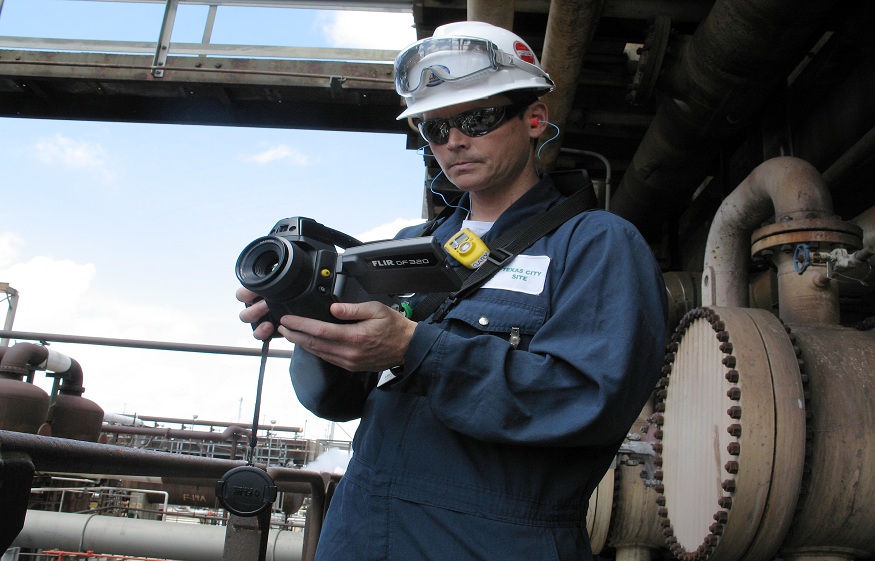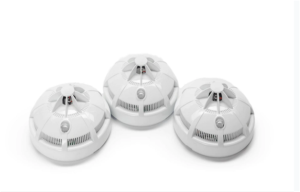8 Ways in Which Infrared (IR) Cameras Are Used In Hydrocarbon Gas Detection
5 min read
Infrared cameras are powerful tools that can be used for a wide range of applications, including detecting hydrocarbon gas leaks. Hydrocarbon gases, such as methane, propane, and butane, are commonly used in various industries but can pose serious safety risks if leaked into the atmosphere. Infrared cameras, also known as thermal imaging cameras, operate based on the principles of thermal radiation and can detect the presence of hydrocarbon gases by analyzing the heat signatures they emit.
In this article, we will explore 10 ways in which an infrared camera works as a hydrocarbon gas detector, providing a valuable solution for gas leak detection and prevention.
1. Heat Signature Analysis:
Each gas has a distinct thermal radiation pattern that can be identified by the camera, allowing for accurate detection and differentiation.
An infrared camera, also known as a thermal imaging camera, captures and analyzes the heat signatures emitted by objects and surfaces. It works based on the principle of detecting and measuring the infrared radiation, or heat, emitted by objects.
These cameras utilize a technique known as infrared absorption spectroscopy to detect the presence of hydrocarbon gases.
The infrared camera has a detector that captures the reflected or transmitted radiation from the area of interest. The infrared hydrocarbon gas detector measures the intensity of the received infrared radiation across various wavelengths. The camera’s electronics analyze the detected signal and compare it to the expected absorption patterns of hydrocarbon gases.
The analyzed data is then presented as a visual representation, typically an image or video. The camera applies color mapping techniques to indicate the presence and concentration of hydrocarbon gas. This can be done by assigning specific colors to different gas concentrations, allowing the operator to identify areas with potential leaks or higher gas concentrations.
2. Spectral Filtering
Infrared cameras used for hydrocarbon gas detection typically employ spectral filtering techniques to enhance their sensitivity to specific gases. The process of spectral filtering involves selecting or isolating specific wavelengths of infrared radiation that correspond to the absorption characteristics of the target gas.
Different gases have specific absorption features in the infrared spectrum. These absorption features are usually distinct and can be used to identify the presence of a particular gas. For hydrocarbon gases, such as methane or propane, their absorption features typically fall within the mid-infrared (3-5 μm) or long-wave infrared (8-14 μm) regions.
Infrared cameras utilize specialized detectors that are sensitive to different wavelengths of infrared radiation. Common detector technologies include indium antimonide (InSb) or mercury cadmium telluride (MCT) for mid-wave infrared (MWIR) detection and microbolometers for long-wave infrared (LWIR) detection. These detectors capture the incoming infrared radiation and convert it into an electrical signal.
3. Gas Plume Visualization
Every object with a temperature above absolute zero emits infrared radiation. The intensity and wavelength of this radiation depend on the object’s temperature. Infrared cameras are designed to detect and capture this thermal radiation.
When a hydrocarbon gas is released into the air, it forms a plume. As the gas rises and spreads, it interacts with the infrared radiation in its absorption bands. The gas absorbs some of the radiation, resulting in a reduction in the intensity of infrared radiation in those specific wavelengths.
To visualize the gas plume, the camera assigns false colors to different intensity levels of the captured radiation. Areas with higher radiation intensity (indicating no gas absorption) are typically represented in warmer colors (e.g., red, yellow), while areas with lower intensity (indicating gas absorption) are represented in cooler colors (e.g., blue, purple).
4. Real-Time Monitoring
Infrared cameras provide real-time monitoring of hydrocarbon gas leaks, allowing for immediate response and mitigation. This capability is crucial for ensuring the safety of personnel and preventing potential accidents or explosions.
They work based on the principle that hydrocarbon gases absorb infrared radiation at specific wavelengths. By detecting and analyzing the infrared radiation emitted or reflected by the gases, infrared cameras can identify and quantify the presence of hydrocarbon gases in real time.
The infrared camera captures the infrared radiation emitted by the objects in its view, including the hydrocarbon gas plumes. The camera converts the detected radiation into a thermal image, where different colors or grayscale values represent variations in temperature.
Advanced image processing algorithms are applied to the captured thermal image. These algorithms identify the regions or pixels in the image where the radiation corresponds to the absorption bands of the target hydrocarbon gases.
5. High Sensitivity
Hydrocarbon gases have characteristic absorption bands in the mid-wave infrared (MWIR) and long-wave infrared (LWIR) regions of the electromagnetic spectrum. These absorption bands correspond to the vibrational and rotational modes of the gas molecules. When infrared radiation passes through a gas sample containing hydrocarbon gases, the gases absorb specific wavelengths of the infrared radiation.
Infrared cameras used for gas detection are equipped with detectors that are sensitive to the MWIR or LWIR regions. These detectors are typically made of materials, such as indium antimonide (InSb) or mercury cadmium telluride (MCT), which can detect infrared radiation in the desired wavelength range.
They are highly sensitive to temperature differences, allowing them to detect even small leaks of hydrocarbon gases. This sensitivity ensures that no potential leak goes unnoticed, enabling proactive maintenance and preventive measures.
6. Quantitative Analysis
Advanced infrared cameras can provide quantitative data on gas concentrations, allowing for accurate assessment of leak severity. This information helps prioritize response actions and ensures that appropriate measures are taken to mitigate the leak effectively.
Hydrocarbon gases, such as methane, emit unique infrared radiation at specific wavelengths. These wavelengths are typically within the mid-wave infrared (MWIR) or long-wave infrared (LWIR) range. Infrared cameras are designed to detect and measure radiation within these ranges.
To enable quantitative analysis, the infrared camera must undergo calibration. This process involves measuring the camera’s response to known concentrations of hydrocarbon gases in controlled conditions. By correlating the camera’s response to known concentrations, a calibration curve or algorithm is established.
7. Integration with Alarm Systems
Infrared cameras can be integrated with alarm systems, triggering alerts when gas leaks exceed predefined thresholds. This integration enhances the overall safety system, enabling swift action and minimizing the risk of gas-related incidents.
8. Cost-Effective Solution
Compared to traditional gas detection methods, infrared cameras offer a cost-effective solution for hydrocarbon gas detection. They eliminate the need for expensive consumables and frequent maintenance, reducing operational costs while maintaining reliable and accurate detection capabilities.
In conclusion, infrared cameras serve as effective hydrocarbon gas detectors by leveraging thermal imaging technology to detect and visualize gas leaks. With their ability to provide real-time monitoring, wide area coverage, and quantitative analysis, infrared cameras play a crucial role in ensuring safety, preventing accidents, and minimizing environmental impacts in various industries where hydrocarbon gases are utilized.







